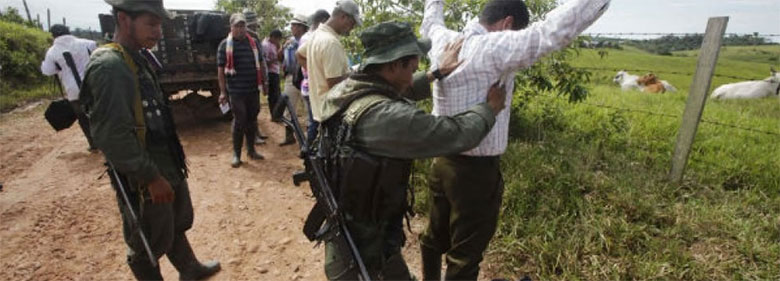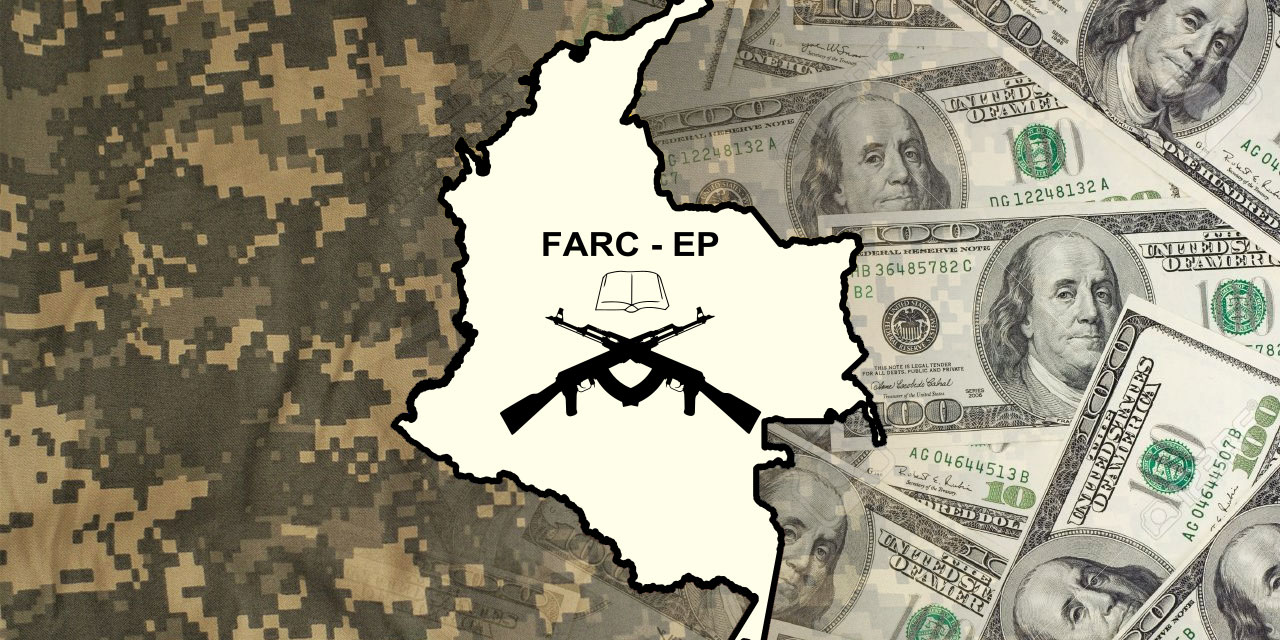Until their demobilization, Colombia’s FARC guerrillas developed a sophisticated business empire that generated billions of dollars to fund their strategy to overthrow the state, according to the prosecution.
The guerrillas’ illegal economy began as small as the FARC was when it took up arms in 1964, the Prosecutor General’s Office said in a report surrendered to the country’s war crimes tribunal.
A 200-year history lesson to understand the FARC’s conflict with Colombia’s state
Initially, the group made its money in Colombia’s largely informal rural economy, particularly through contributions of sympathizers and artisan gold mining, according to the prosecution.
But as time went by, the conflict slowly escalated and the FARC became more aggressive, what used to be voluntary contributions by sympathizers became extortion payments imposed on many communities in the countryside.
Especially after the guerrillas got involved in drug trafficking and kidnapping in the 1980s, the FARC’s illicit economic activities became so diversified and sophisticated that investigators are unable to estimate how much money the guerrillas made exactly.
Between 1993 and 2012, the FARC’s multinational money machine generated more than $1.5 billion in pesos, dollars and euros, the prosecution said. The group additionally made 2.5 billion Venezuelan bolivars that have become impossible to convert because of hyperinflation in the neighboring country.
Diversification, regionalization and centralization
The FARC was able to grow its revenue through processes of diversification of its revenue streams, taking advantage of regional economic opportunities and a centralized financial management that allowed the organization to finance its long-term strategy.
Regionalization
Centralization
Prosecutor General’s Office
Kidnapping

“Miracle catches” like the one in this image allowed FARC guerrillas to kidnap large numbers of victims at once without too much effort or cost. (Image: Radio Santa Fe)
According to the prosecution, the guerrillas sporadically kidnapped large landowners for extortion purposes since the 1960s, but the practice didn’t become a significant revenue generator until the 1990s.
Particularly the “miracle catches” in which sometimes dozens of civilians were kidnapped at highway roadblocks allowed the group to make this practice a low-cost revenue generator.
These miraculous catches were mainly used in areas where the government had no control, victims could be held hostage cheaply and victims’ families were presumed to be able to pay ransom fees.
FARC fronts that operated in areas where kidnapping proved particularly profitable specialized in the practice.
The revenue from kidnapping was sent to the FARC’s leadership, which was in charge in the general financing of the organization, according to the prosecution.
In the case of high-profile kidnapping, negotiations with families would be carried out by the FARC’s top commanders while the hostages were held captive by fronts.
The prosecution estimated that between 1996 and 2012, the year “Timochenko” banned the practice, the FARC earned more than $1.1 billion through ransom payments, making the crime against humanity one of its principal sources of revenue.
Extortion
Multinational Chiquita Brands paid the FARC on average $32,000 a year between 1989 to 1999, according to victims.
Because the FARC controlled large parts of Colombia, the guerrilla organization was able to “tax” businesses. Also this practice depended on regional dynamics. If a company was making a lot of money in an area with little state control, it would be charged more than a smaller company.
Depending on the risk of getting caught and the profitability of companies in the regions, some FARC fronts would specialize in this practice.
Depending on the potential revenue, negotiations with large companies — including multinationals like Chiquita Bananas — would be carried out by the FARC’s regional or even national commanders.
Because extortion didn’t require the large movement of troops and was relatively low-risk because of the state’s inability to provide basic security, the indiscriminate taxation of companies and small businesses became another core revenue generator in many FARC-controlled territories.
The practice was so widespread and the revenue was so stable and profitable that it allowed the national FARC commanders to distribute revenue to fronts that were incurring in high costs of war or had little access to financial resources.
In fact, the practice was so common and the money flows were so sophisticated that the Prosecutor General’s Office was unable to estimate how much money the guerrillas made through extortion.
Drug trafficking
Remains of “Tranquilandia,” a major cocaine processing of the Medellin Cartel that was protected by the FARC until it was destroyed in 1984. (Image: El Espectador)
The FARC leadership ordered its forces to begin “taxing” drug traffickers in 1982 despite the high risk of violent resistance from the well-armed narcos and the group’s initial rejection of the cocaine trade.
Initially, coca growers were taxed per kilo of coca paste that was produced or trafficked through guerrilla territory.
Within a relatively short period of time, both guerrillas and drug traffickers saw this arrangement as beneficial as it allowed the narcos to focus on exporting cocaine while the guerrillas would make sure the regional cultivation and production processes were protected from state intervention.
How drug trafficking entered Colombia’s armed conflict
According to the prosecution, the FARC increasingly became involved in the production of cocaine and were able to increase revenue by running its own cocaine laboratories and drug trafficking routes through guerrilla territories. In some cases, guerrilla fronts were able to establish international drug trafficking routes, presumably in cooperation with Mexican cartels.
The FARC’s increased involvement in drug trafficking went hand in hand with the guerrillas’ increased use of violence.
While in some areas coca cultivation allowed the guerrillas to create a relatively peaceful alternative economy for local peasants, in other areas the guerrillas would violently displace farmers to make place for large coca plantations and cocaine production facilities or to protect drug trafficking routes, the prosecution said.
The FARC’s national leadership coordinated this part of the organization’s finances, and would distribute funds to make financial investments where deemed necessary to increase revenue or strengthen its military presence.
The prosecution was unable to define how much money the FARC made through drug trafficking because of the complexity of the trade. But — just to give an indication of how much money was going around — one captured FARC member confessed in 2006 that the guerrillas’ Eastern Bloc of “Mono Jojoy” generated a revenue of at least 2.4 billion through drug trafficking.
Illegal mining
Part of the FARC’s gold reserve that was surrendered to authorities after their demobilization in 2017.
In order to grow their military apparatus, the FARC leadership decided in 1993 to engage in mining within territories under their control. This involvement ranged from extorting miners to managing mining operations.
Like global capital investors, the guerrillas found that gold stabilized their capital, especially during the 1990s when the peso was suffering high inflation rates. Their involvement in gold mining became even more profitable after the dot.com bubble that burst in 2000 and gold prices skyrocketed.
Based on only on testimonies of seized computers and the testimonies of former FARC members, the prosecution said it was able the FARC generated more then $5.3 million through illegal mining between 1993 and 2016. The real revenue is much higher.
When the group demobilized, it reported having 276 kilos in gold reserves, which on today’s market has a value of $12.6 million.


